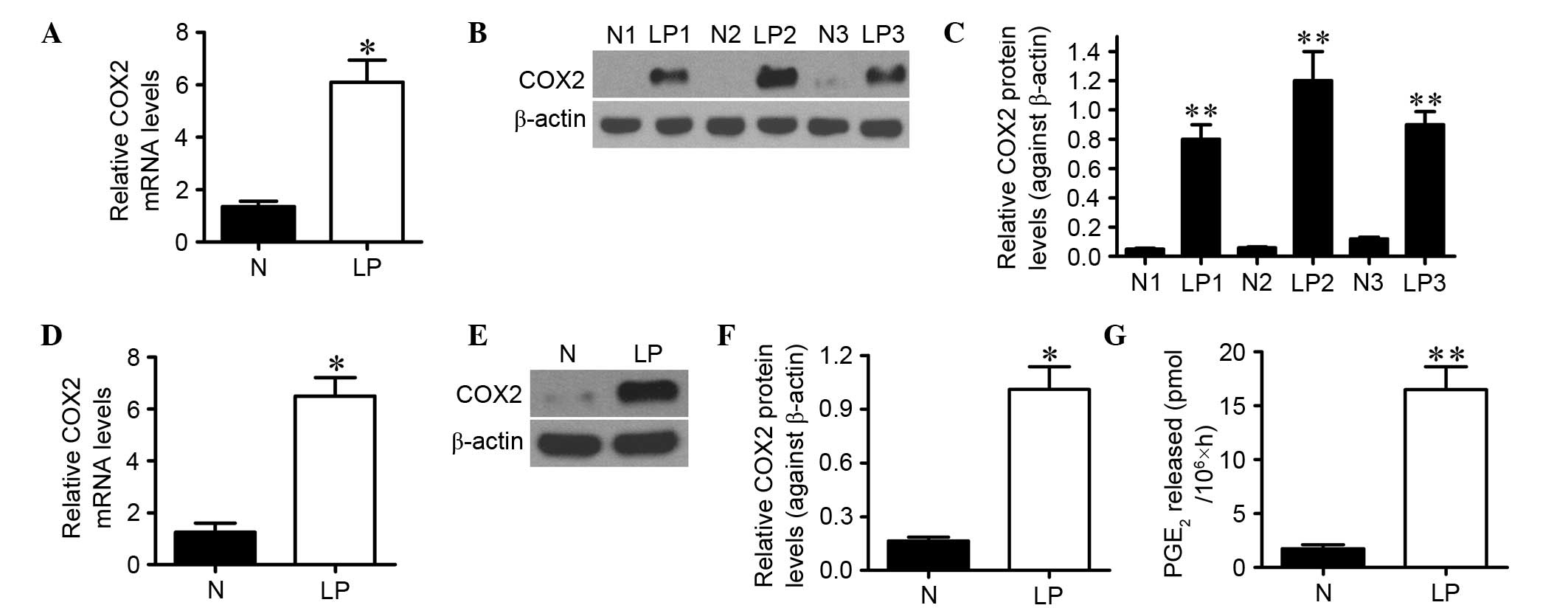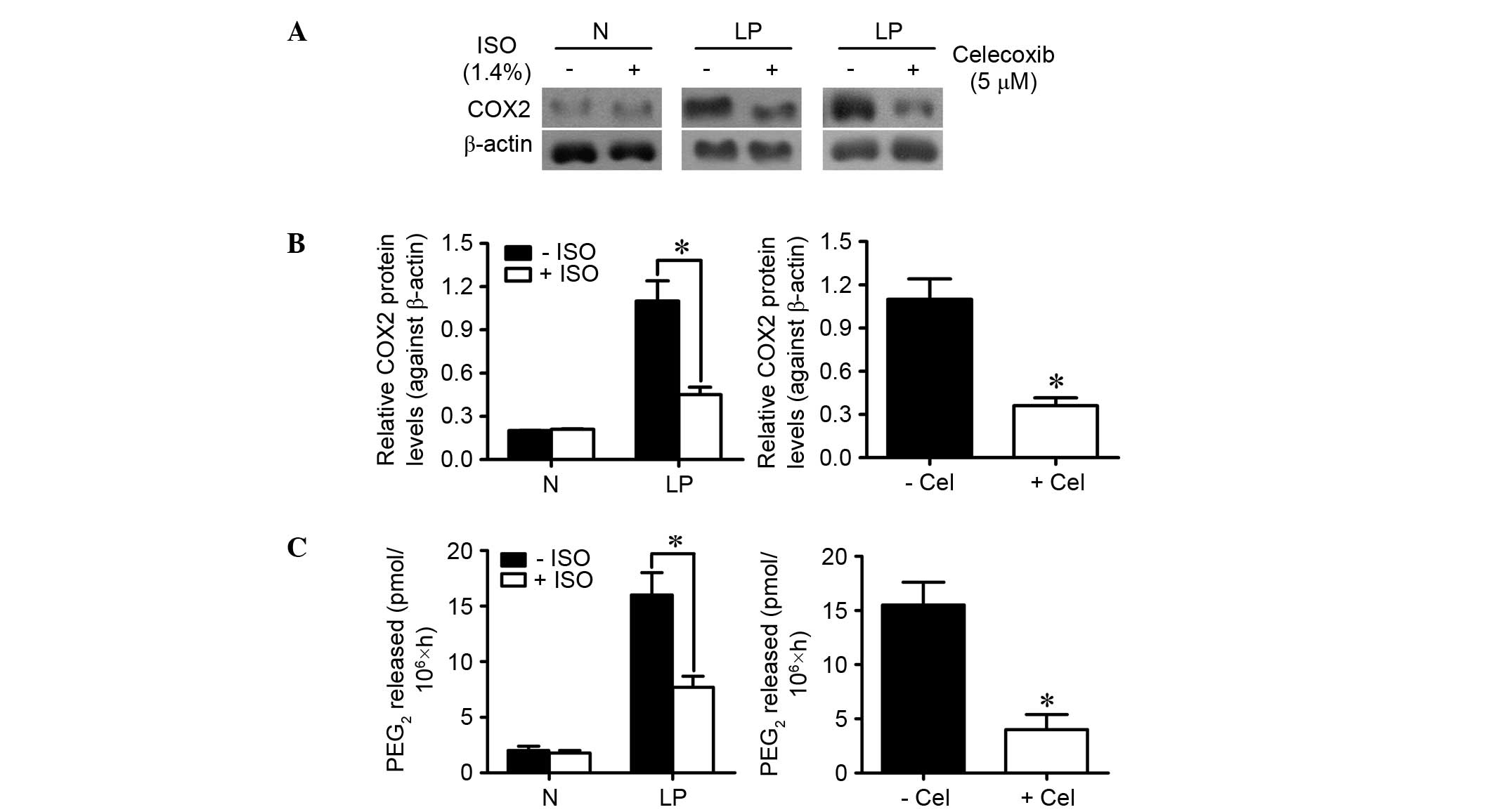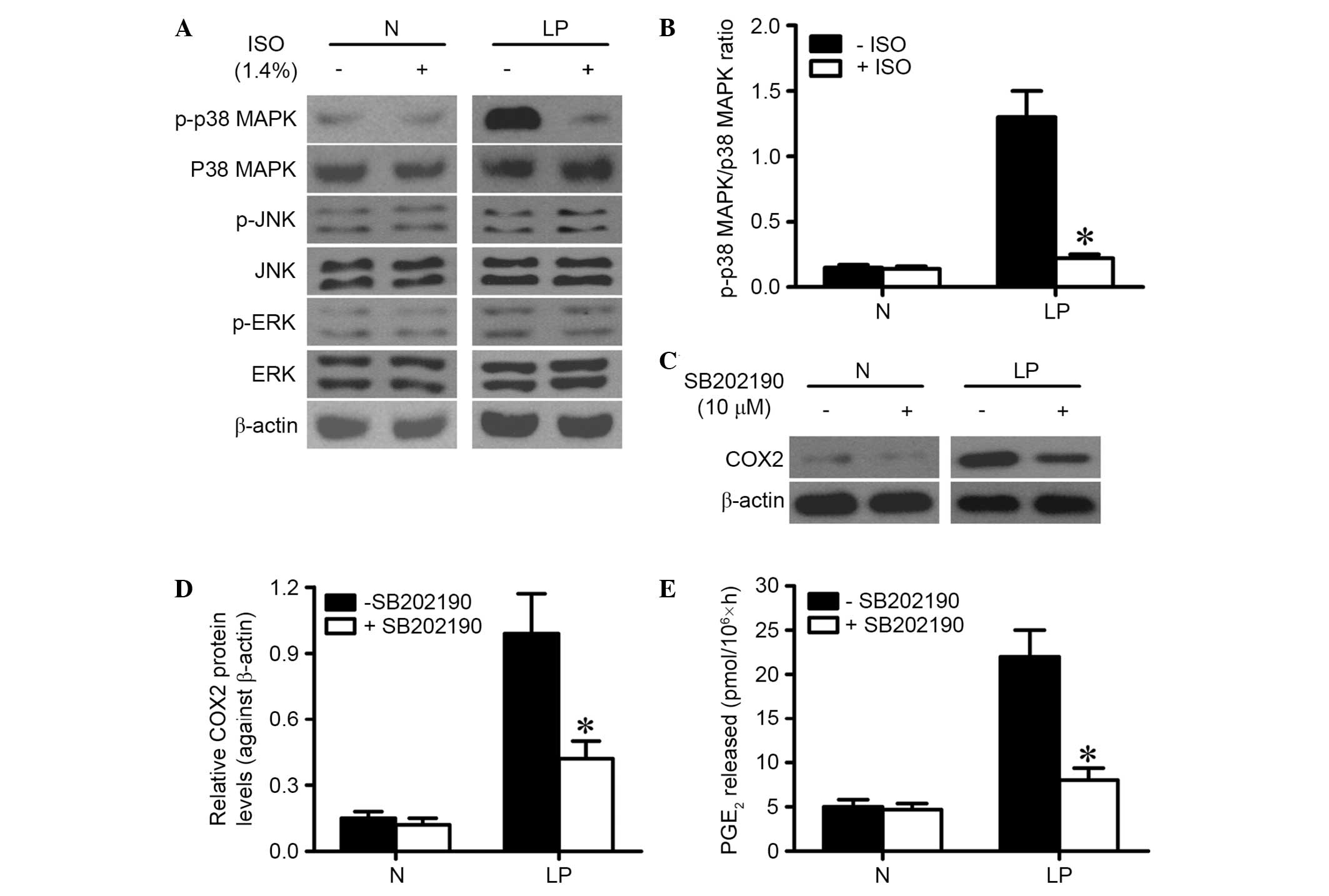|
1
|
Watanabe A, Tsujie H, Taniguchi M,
Hosokawa M, Fujita M and Sasaki S: Laryngoscopic detection of
pharyngeal carcinoma in situ with narrowband imaging. Laryngoscope.
116:650–654. 2006. View Article : Google Scholar : PubMed/NCBI
|
|
2
|
Katsenos S and Becker HD: Respiratory
papillomatosis: A rare chronic disease, difficult to treat, with
potential to lung cancer transformation: Apropos of two cases and a
brief literature review. Case Rep Oncol. 4:162–171. 2011.
View Article : Google Scholar : PubMed/NCBI
|
|
3
|
Katada C, Nakayama M, Tanabe S, Koizumi W,
Masaki T, Takeda M, Okamoto M and Saigenji K: Narrow band imaging
for detecting metachronous superficial oropharyngeal and
hypopharyngeal squamous cell carcinomas after chemoradiotherapy for
head and neck cancers. Laryngoscope. 118:1787–1790. 2008.
View Article : Google Scholar : PubMed/NCBI
|
|
4
|
Steinberg BM, Meade R, Kalinowski S and
Abramson AL: Abnormal differentiation of human
papillomavirus-induced laryngeal papillomas. Arch Otolaryngol Head
Neck Surg. 116:1167–1171. 1990. View Article : Google Scholar : PubMed/NCBI
|
|
5
|
Poetker DM, Sandler AD, Scott DL, Smith RJ
and Bauman NM: Survivin expression in juvenile-onset recurrent
respiratory papillomatosis. Ann Otol Rhinol Laryngol. 111:957–961.
2002. View Article : Google Scholar : PubMed/NCBI
|
|
6
|
Johnston D, Hall H, DiLorenzo TP and
Steinberg BM: Elevation of the epidermal growth factor receptor and
dependent signaling in human papillomavirus-infected laryngeal
papillomas. Cancer Res. 59:968–974. 1999.PubMed/NCBI
|
|
7
|
Zhang P and Steinberg BM: Overexpression
of PTEN/MMAC1 and decreased activation of Akt in human
papillomavirus-infected laryngeal papillomas. Cancer Res.
60:1457–1462. 2000.PubMed/NCBI
|
|
8
|
Vambutas A, Di Lorenzo TP and Steinberg
BM: Laryngeal papilloma cells have high levels of epidermal growth
factor receptor and respond to epidermal growth factor by a
decrease in epithelial differentiation. Cancer Res. 53:910–914.
1993.PubMed/NCBI
|
|
9
|
Johnston D, Hall H, DiLorenzo TP and
Steinberg BM: Elevation of the epidermal growth factor receptor and
dependent signaling in human papillomavirus-infected laryngeal
papillomas. Cancer Res. 59:968–974. 1999.PubMed/NCBI
|
|
10
|
Tanabe T and Tohnai N: Cyclooxygenase
isozymes and their gene structures and expression. Prostaglandins
Other Lipid Mediat 68–69. 95–114. 2002. View Article : Google Scholar
|
|
11
|
Wu R, Coniglio SJ, Chan A, Symons MH and
Steinberg BM: Up-regulation of Rac1 by epidermal growth factor
mediates COX-2 expression in recurrent respiratory papillomas. Mol
Med. 13:143–150. 2007. View Article : Google Scholar : PubMed/NCBI
|
|
12
|
Wu R, Abramson AL, Shikowitz MJ,
Dannenberg AJ and Steinberg BM: Epidermal growth factor induced
cyclooxygenase-2 expression is mediated through
phosphatidylinositol-3 kinase, not mitogen-activated
protein/extracellular signal-regulated kinase kinase, in recurrent
respiratory papillomas. Clin Cancer Res. 11:6155–6161. 2005.
View Article : Google Scholar : PubMed/NCBI
|
|
13
|
Li JT, Wang H, Li W, Wang LF, Hou LC, Mu
JL, Liu X, Chen HJ, Xie KL, Li NL and Gao CF: Anesthetic isoflurane
posttreatment attenuates experimental lung injury by inhibiting
inflammation and apoptosis. Mediat Inflamm. 2013:1089282013.
View Article : Google Scholar
|
|
14
|
Wang H, Fan J, Li NL, Li JT, Yuan SF, Yi
J, Wang L, Chen JH, Lv YG, Yao Q, et al: A subanesthetic dose of
isoflurane during postconditioning ameliorates zymosan-induced
neutrophil inflammation lung injury and mortality in mice. Mediat
Inflamm. 2013:4796282013. View Article : Google Scholar
|
|
15
|
Kvolik S, Glavas-Obrovac L, Bares V and
Karner I: Effects of inhalation anesthetics halothane, sevoflurane
and isoflurane on human cell lines. Life Sci. 77:2369–2383. 2005.
View Article : Google Scholar : PubMed/NCBI
|
|
16
|
Wang H, Wang L, Li NL, Li JT, Yu F, Zhao
YL, Wang L, Yi J, Wang L, Bian JF, et al: Subanesthetic isoflurane
reduces zymosan-induced inflammation in murine kupffer cells by
inhibiting ROS-activated p38 MAPK/NF-kB signaling. Oxid Med Cell
Longev. 2014:8516922014. View Article : Google Scholar : PubMed/NCBI
|
|
17
|
Steinberg BM, Abramson AL and Meade RP:
Culture of human laryngeal papilloma cells in vitro. Otolaryngol
Head Neck Surg. 90:728–735. 1982. View Article : Google Scholar : PubMed/NCBI
|
|
18
|
Kawaraguchi Y, Horikawa YT, Murphy AN,
Murray F, Miyanohara A, Ali SS, Head BP, Patel PM, Roth DM and
Patel HH: Volatile anesthetics protect cancer cells against tumor
necrosis factor-related apoptosis-inducing ligand-induced apoptosis
via caveolins. Anesthesiology. 115:499–508. 2011. View Article : Google Scholar : PubMed/NCBI
|
|
19
|
Livak KJ and Schmittgen TD: Analysis of
relative gene expression data using real-time quantitative PCR and
the 2(−Delta Delta C(T)) Method. Methods. 25:402–408. 2001.
View Article : Google Scholar : PubMed/NCBI
|
|
20
|
Olson PN, Bowen RA, Behrendt MD, Olson JD
and Nett TM: Validation of radioimmunoassays to measure
prostaglandins F2 alpha and E2 in canine endometrium and plasma. Am
J Vet Res. 45:119–124. 1984.PubMed/NCBI
|
|
21
|
Stoeck A, Gast D, Sanderson MP, Issa Y,
Gutwein P and Altevogt P: L1-CAM in a membrane-bound or soluble
form augments protection from apoptosis in ovarian carcinoma cells.
Gynecol Oncol. 104:461–469. 2007. View Article : Google Scholar : PubMed/NCBI
|
|
22
|
Harris RE: Cyclooxygenase-2 (cox-2) and
the inflammogenesis of cancer. Subcell Biochem. 42:93–126. 2007.
View Article : Google Scholar : PubMed/NCBI
|
|
23
|
Turini ME and DuBois RN: Cyclooxygenase-2:
A therapeutic target. Annu Rev Med. 53:35–57. 2002. View Article : Google Scholar : PubMed/NCBI
|
|
24
|
Robinson AB, Das SK, Bruegger DE, Hoover
LA and Sanford TR: Characterization of cyclooxygenase in laryngeal
papilloma by molecular techniques. Laryngoscope. 109:1137–1141.
1999. View Article : Google Scholar : PubMed/NCBI
|
|
25
|
Banerjee AG, Gopalakrishnan VK,
Bhattacharya I and Vishwanatha JK: Deregulated cyclooxygenase-2
expression in oral premalignant tissues. Mol Cancer Ther.
1:1265–1271. 2002.PubMed/NCBI
|
|
26
|
Chan G, Boyle JO, Yang EK, Zhang F, Sacks
PG, Shah JP, Edelstein D, Soslow RA, Koki AT, Woerner BM, et al:
Cyclooxygenase-2 expression is up-regulated in squamous cell
carcinoma of the head and neck. Cancer Res. 59:991–994.
1999.PubMed/NCBI
|
|
27
|
Ranelletti FO, Almadori G, Rocca B,
Ferrandina G, Ciabattoni G, Habib A, Galli J, Maggiano N, Gessi M
and Lauriola L: Prognostic significance of cyclooxygenase-2 in
laryngeal squamous cell carcinoma. Int J Cancer. 95:343–349. 2001.
View Article : Google Scholar : PubMed/NCBI
|
|
28
|
Kulkarni S, Rader JS, Zhang F, Liapis H,
Koki AT, Masferrer JL, Subbaramaiah K and Dannenberg AJ:
Cyclooxygenase-2 is overexpressed in human cervical cancer. Clin
Cancer Res. 7:429–434. 2001.PubMed/NCBI
|
|
29
|
Golijanin D, Tan JY, Kazior A, Cohen EG,
Russo P, Dalbagni G, Auborn KJ, Subbaramaiah K and Dannenberg AJ:
Cyclooxygenase-2 and microsomal prostaglandin E synthase-1 are
overexpressed in squamous cell carcinoma of the penis. Clin Cancer
Res. 10:1024–1031. 2004. View Article : Google Scholar : PubMed/NCBI
|
|
30
|
Wada T and Penninger JM: Mitogen-activated
protein kinases in apoptosis regulation. Oncogene. 23:2838–2849.
2004. View Article : Google Scholar : PubMed/NCBI
|
|
31
|
Arun B and Goss P: The role of COX-2
inhibition in breast cancer treatment and prevention. Semin Oncol.
31(2): Suppl 7. S22–S29. 2004. View Article : Google Scholar
|
|
32
|
Tsujii M, Kawano S and DuBois RN:
Cyclooxygenase-2 expression in human colon cancer cells increases
metastatic potential. Proc Natl Acad Sci USA. 94:3336–3340. 1997.
View Article : Google Scholar : PubMed/NCBI
|
|
33
|
Krysan K, Dalwadi H, Sharma S, Põld M and
Dubinett S: Cyclooxygenase 2-dependent expression of surviving is
critical for apoptosis resistance in non-small cell lung cancer.
Cancer Res. 64:6359–6362. 2004. View Article : Google Scholar : PubMed/NCBI
|
|
34
|
Subbmaramiah K and Dannenberg AJ:
Cyclooxygenase 2: A molecular target for cancer prevention and
treatment. Trends Pharmacol Sci. 24:96–102. 2003. View Article : Google Scholar : PubMed/NCBI
|
|
35
|
Loop T, Dovi-Akue D, Frick M, Roesslein M,
Egger L, Humar M, Hoetzel A, Schmidt R, Borner C, Pahl HL, et al:
Volatile anesthetics induce caspase-dependent,
mitochondria-mediated apoptosis in human T lymphocytes in vitro.
Anesthesiology. 102:1147–1157. 2005. View Article : Google Scholar : PubMed/NCBI
|
|
36
|
Aravindan N, Cata JP, Hoffman L, Dougherty
PM, Riedel BJ, Price KJ and Shaw AD: Effects of isoflurane,
pentobarbital and urethane on apoptosis and apoptotic signal
transduction in rat kidney. Acta Anaesthesiol Scand. 50:1229–1237.
2006. View Article : Google Scholar : PubMed/NCBI
|
|
37
|
Zhang Y, Dong Y, Wu X, Lu Y, Xu Z, Knapp
A, Yue Y, Xu T and Xie Z: The mitochondrial pathway of anesthetic
isoflurane induced apoptosis. J Biol Chem. 285:4025–4037. 2010.
View Article : Google Scholar : PubMed/NCBI
|
|
38
|
Cory S and Adams JM: The Bcl2 family:
Regulators of the cellular life-or-death switch. Nat Rev Cancer.
2:647–656. 2002. View
Article : Google Scholar : PubMed/NCBI
|
|
39
|
Orrenius S, Zhivotovsky B and Nicotera P:
Regulation of cell death: The calcium-apoptosis link. Nat Rev Mol
Cell Biol. 4:552–565. 2003. View Article : Google Scholar : PubMed/NCBI
|



















